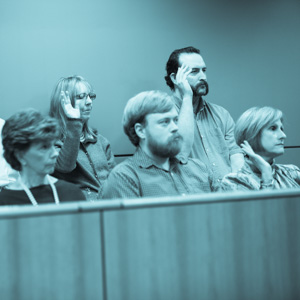By Dr. Ken Broda Bahm:

To supplement the written descriptions in the previous two entries, this post features a video demonstration designed to illustrate the approach to attorney-conducted oral voir dire that I’ve been writing about. Using a number of volunteers from my firm, I created this clip in order to show and discuss the on-your-feet decision making that goes into the task of pivoting off a panelist’s answer in order to divide the group based on higher and lower risk. As you’ll see, it’s an approach that asks you to maintain, and to give up, a little bit of control.
When an attorney is eliciting evidence through testimony, especially in cross but also in direct, the bottom line is that questioning means control. In voir dire, however, the maxim is different: Questioning means learning. It means learning about the potential sources of bias that would justify a strike or cause challenge. And it also means learning about the thoughts and themes that the panelists themselves have on their minds. Good voir dire requires both learning about risk and laying out themes, and doing so in a way that makes those in the panel relaxed enough to reveal their biases.
In the first post in this series, I shared a model for structuring the questions. In the second post, I discussed its application in trickier situations and shared a list of good oral voir dire habits. In this final post, all that’s left is to show what it looks like.
Here’s the demonstration (and if the embed below doesn’t play, just go to this link in order to watch it on YouTube).
______
The Series:
______
Other Posts on Voir Dire:
- Don’t Build Your Jury Out of Leftovers
- Don’t Hate on Younger Jurors
- The Products Survey (Part II): Spot the Wrong Kind of Juror for Your Defense
______